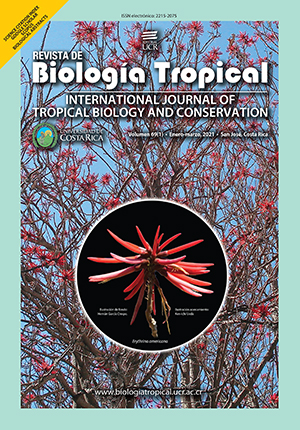Abstract
Introduction: Coffee, cocoa crops and pastures for livestock are agricultural activities of economic interest in Colombia. When these activities are developed under agroforestry systems (AFS), they promote conservation and increase carbon fixation and, therefore, climate change mitigation. Objective: The study estimated carbon storage in aboveground biomass, necromass and soil organic carbon under SAF with cocoa (SAF cocoa), SAF with coffee (SAF coffee), silvopastoral systems (SPS) and forest in Mesetas, Meta (Colombia). Methods: Forty-four sampling plots were established, where dasometric measurements were taken from individuals with a trunk diameter at breast height (dbh) ≥ 2.5 cm (saplings, trees and large trees), whose values were transformed to carbon with biomass models and a default carbon fraction. In the three agricultural systems, the number of cocoa and coffee trees and associated plants was counted, and the type of use (timber, food, combustion) was identified. Results: Carbon storage showed significant differences (P < 0.0001) among land uses. The highest accumulation was found in forest, with 216.6 t C ha-1, exceeding in 59, 72 and 73 % to SAF cocoa, SSP and SAF coffee, respectively. The botanical families Fabaceae, Lauraceae and Primulaceae presented the greatest carbon storage. In SAF cocoa, the greatest accumulation of carbon was found in species for human food; in SAF coffee and SSP, the greatest storage was presented by timber species. Conclusion: These results highlight the potential for carbon storage in the most important productive systems in the Meta department, which is important for designing strategies that allow for integrating actions to mitigate greenhouse gas emissions and to promote the local peasant economy.
##plugins.facebook.comentarios##

This work is licensed under a Creative Commons Attribution 4.0 International License.
Copyright (c) 2021 Héctor Eduardo Hernández Núñez, Hernán Jair Andrade Castañeda, Juan Carlos Suárez Salazar, José Ramiro Sánchez Acosta, David Ricardo Gutiérrez Suárez, Gustavo Adolfo Gutiérrez García, Edwin Trujillo Trujillo, Fernando Casanoves


